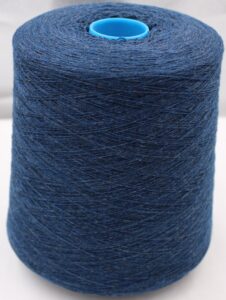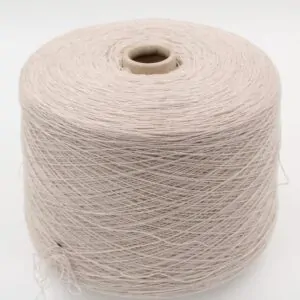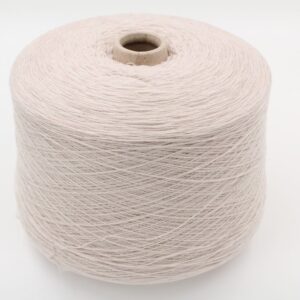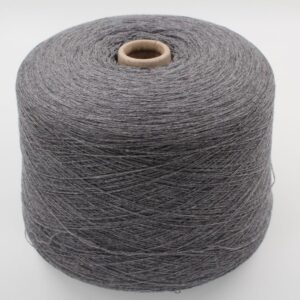How is the thickness (count) determined in yarns

 Many people ask me what 3×2/15, or 2/28 or 4600 means. This is the yarn count, i.e. the thickness. In this article I want to try to explain exactly what it means and why.
Many people ask me what 3×2/15, or 2/28 or 4600 means. This is the yarn count, i.e. the thickness. In this article I want to try to explain exactly what it means and why.
Let’s start by introducing the main characteristics of the yarns.
The fundamental characteristics of the yarns are the twist or twist, the uniformity of the thickness, the resistance and elongation and the count or thickness.
The twist of the yarns is determined in twist meters.
The twist can be to the right (Z), or to the left (S).
Yarns are said to be single-stranded when they are made up of a single thread or twisted when they are formed by a twist of several threads (or ends).
Uniformity of thickness can be seen by winding a yarn onto a piece of cardboard of a different color than that of the yarn. The eye appreciates any differences in thickness.
The resistance is determined with dynamometers, devices that allow the resistance of the yarn before breaking and its elasticity to be established.
However, let’s look in detail at the thickness or in jargon “the count” of the yarns.
The “count” of the yarns is the conventional name referring to the fineness, i.e. the thickness of the yarn.
The structure of the yarn is generally cylindrical, so we could think of using the diameter as a reference to measure its thickness. However, a yarn poses a drawback which makes it impossible to use a measuring instrument (such as a gauge); this led to having to think of another type of reference. The only two measurements that can be made on a yarn are those relating to its length (L) and its weight (P); the relationship between these two quantities is called Title (T).
There are two titration systems:
1.Titration by length: Represents the ratio between length and weight. In this system, the higher the fineness, the higher the fineness, for example a fineness Nm. 4000 will be finer than a fineness Nm. 2000 and a fineness 2/60000 will be finer than a fineness 2/28000. The metric numerical count (Nm) belongs to this titration system, i.e. the number of skeins of 1000 meters constituting 1 kg. It is used for wool in particular.
For cotton, the English count is used which considers the length of 840 yards (equal to 768 metres) and the pound (equal to 453.6 grams). For flax, hemp and jute the English method is based on 300 yards (247 metres) and one pound.
LT = ——P
This is the most used method currently, it is the method that you will find on the titles of our yarns, and it is the most widespread and well-known method in Italy, which I advise you to refer to more and learn.
To simplify the calculation, when measuring Nm counts, we know that Nm count 2000 corresponds to a yarn whose length is 2000 meters in 1 kg of yarn. While in the counts of twisted yarns it is used to divide the denominator by the numerator, for example in a yarn count of 2/28000 to obtain the meters of yarn contained in 1 kg we divide: 28000 : 2 = 14000 meters in a kg of yarn, from here it is easy to obtain the meters in a ball or a skein of for example 100 grams.
The count of the yarn can also give us indications to establish the fineness of the machine or the number of needles to use for processing.
We know for example that a yarn count of 2/28000 can be used on the 12 gauge single-ply machine or on the 7-8 gauge two-ply machine, or needle cones number 2.5/3 with two or three ply, and a Nm yarn 2800 can be worked with needles 3.5-4 or crochet hook 3-3.5. But this is relative, as the type of yarn (fibre) used, the model you intend to make, and for machine threads the type of machine must always be considered, and for hand-knitting threads the hand of the person making the head.2.Titration by weight: Represents the ratio between weight and length. In this case, the higher the count, the greater the thickness of the yarn. With this titration method you have the legal title, expressed in money (0.05 grams) and the length of 450 meters. It is used for silk and all artificial and synthetic fibres.
PT = ——L
The count always refers to simple yarns, in twisted yarns the count is expressed as a fraction (example: 30/2, 50/2, 60/3, etc.)
Similarly, there are different numbering systems that differ with respect to the units of measurement put into relation. The most used numbers are Nm (metric numeric) which relates 1 meter of yarn to 1 gram, which we have already talked about; the Nec (English Cotton Number); the Nel (English number of linen); the NP (Pratese number).
Tex should represent the universal count with which to indicate the thickness of the yarns, but in reality this is not always the case (it is however useful with regards to production calculations).
Td is particularly used for silk yarns, technological fibers or single fibers in general.
The Np is used for the titration of carded wool yarns (in use only in Prato).
The count of twisted yarns with threads of different counts (slub yarns) is expressed by indicating the count of the thicker yarn in the numerator and the count of the thinner yarn in the denominator.







